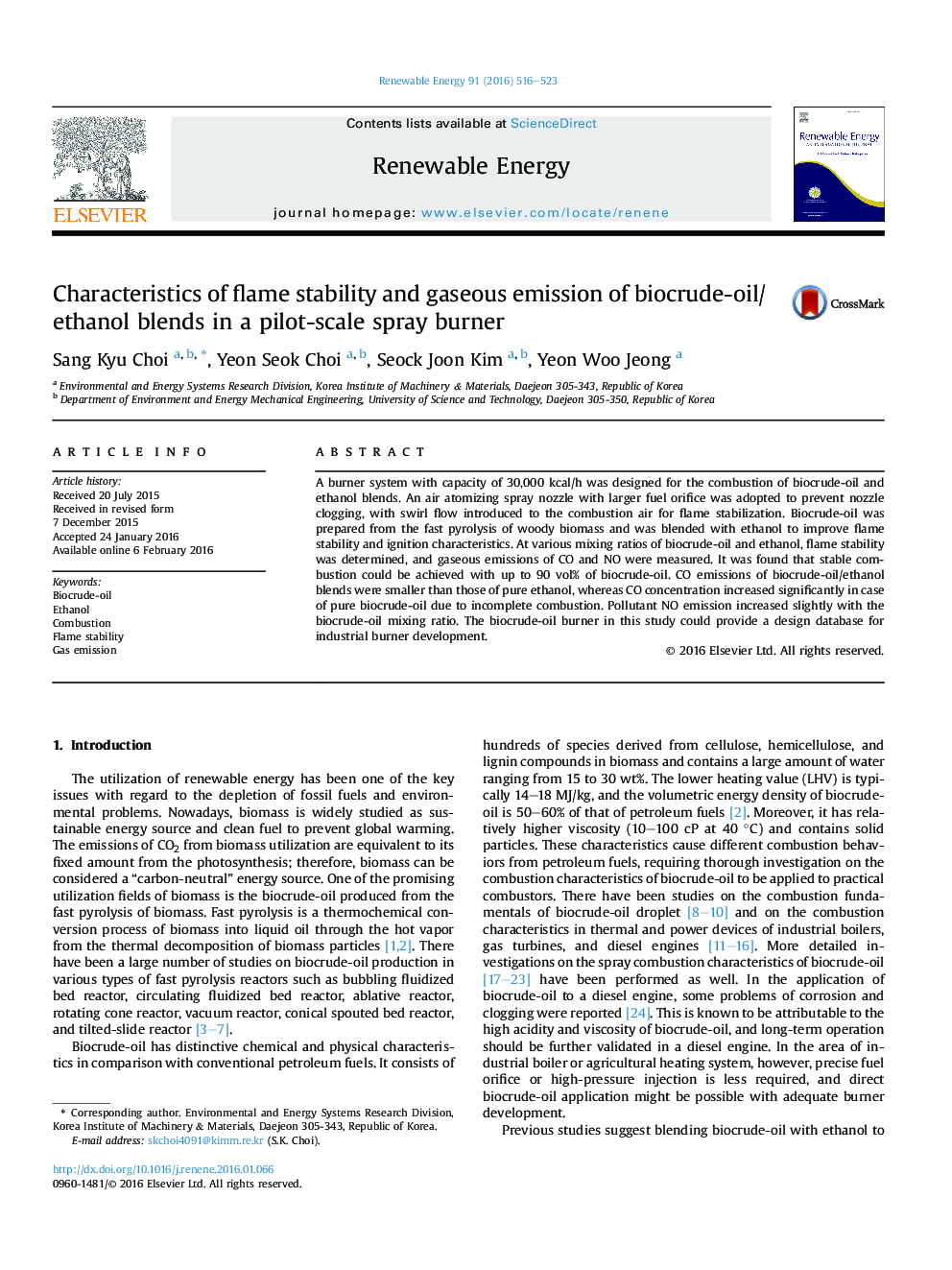| Article ID | Journal | Published Year | Pages | File Type |
|---|---|---|---|---|
| 6766187 | Renewable Energy | 2016 | 8 Pages |
Abstract
A burner system with capacity of 30,000Â kcal/h was designed for the combustion of biocrude-oil and ethanol blends. An air atomizing spray nozzle with larger fuel orifice was adopted to prevent nozzle clogging, with swirl flow introduced to the combustion air for flame stabilization. Biocrude-oil was prepared from the fast pyrolysis of woody biomass and was blended with ethanol to improve flame stability and ignition characteristics. At various mixing ratios of biocrude-oil and ethanol, flame stability was determined, and gaseous emissions of CO and NO were measured. It was found that stable combustion could be achieved with up to 90Â vol% of biocrude-oil. CO emissions of biocrude-oil/ethanol blends were smaller than those of pure ethanol, whereas CO concentration increased significantly in case of pure biocrude-oil due to incomplete combustion. Pollutant NO emission increased slightly with the biocrude-oil mixing ratio. The biocrude-oil burner in this study could provide a design database for industrial burner development.
Related Topics
Physical Sciences and Engineering
Energy
Renewable Energy, Sustainability and the Environment
Authors
Sang Kyu Choi, Yeon Seok Choi, Seock Joon Kim, Yeon Woo Jeong,
